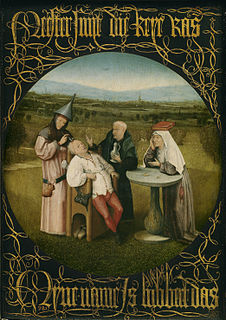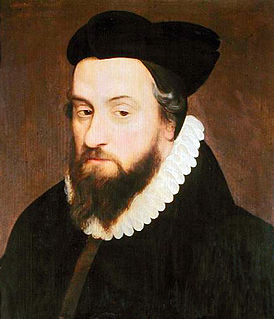This is a timeline of the history of medicine and medical technology.

Abū al-Qāsim Khalaf ibn al-'Abbās al-Zahrāwī al-Ansari, popularly known as Al-Zahrawi (الزهراوي), Latinised as Abulcasis, was an Arab Andalusian physician, surgeon and chemist. Considered to be the greatest surgeon of the Middle Ages, he has been referred to as the "father of modern surgery".
The year 1573 in science and technology included many events, some of which are listed here.

Paul of Aegina or Paulus Aegineta was a 7th-century Byzantine Greek physician best known for writing the medical encyclopedia Medical Compendium in Seven Books. He is considered the “Father of Early Medical Writing”. For many years in the Byzantine Empire, his works contained the sum of all Western medical knowledge and was unrivaled in its accuracy and completeness.
Rogerius, also called Rogerius Salernitanus, Roger Frugard, Roger Frugardi, Roggerio Frugardo, Rüdiger Frutgard and Roggerio dei Frugardi, was a Salernitan surgeon who wrote a work on medicine entitled Practica Chirurgiae around 1180. It is also called Chirurgiae Magistri Rogerii.

Guy de Chauliac, also called Guido or Guigo de Cauliaco, was a French physician and surgeon who wrote a lengthy and influential treatise on surgery in Latin, titled Chirurgia Magna. It was translated into many other languages and widely read by physicians in late medieval Europe.

Sir John Forbes FRCP FRS was a distinguished Scottish physician, famous for his translation of the classic French medical text De L'Auscultation Mediate by René Laennec, the inventor of the stethoscope. He was physician to Queen Victoria 1841–61.

Surgery is the branch of medicine that deals with the physical manipulation of a bodily structure to diagnose, prevent, or cure an ailment. Ambroise Paré, a 16th-century French surgeon, stated that to perform surgery is, "To eliminate that which is superfluous, restore that which has been dislocated, separate that which has been united, join that which has been divided and repair the defects of nature."
Chaulhac is a commune in the Lozère department in southern France.

Lanfranc of Milan, variously called Guido Lanfranchi, Lanfranco or Alanfrancus, was an Italian surgeon who set up practice in France. Lanfranc was appointed personal physician to Philip IV of France and in 1296 published a thesis on surgery under the title Chirurgia Magna, the same title as a later work published by Guy de Chauliac, Chirurgia Magna.

Theodoric Borgognoni, also known as Teodorico de' Borgognoni, and Theodoric of Lucca, was an Italian who became one of the most significant surgeons of the medieval period. A Dominican friar and Bishop of Cervia, Borgognoni is considered responsible for introducing and promoting important medical advances including basic antiseptic practice in surgery and the use of anaesthetics.

Laurent Joubert was a French physician. He travelled to Montpellier at the age of 21 to study medicine, and became a student of Guillaume Rondelet, the chancellor of the Medical Faculty at the University of Montpellier. Soon after Rondelet's death in 1556, Joubert succeeded him as chancellor. He was later summoned by Catherine de' Medici, the queen consort of France, to be her personal physician. Joubert went on to become one of the physicians to Henry III of France. Joubert was married to Louise Guichard, the sister of the doctor to the King of Navarre.
Various individuals have advanced the surgical art and, as a result, have been called the father of surgery by various sources.
Ó hÍceadha is a surname of Irish origin.
Cormac Mac Duinnshléibhe was an Irish physician and scribe, fl. c. 1460. He was an influential medieval Irish physician and medical scholar of the Arabian school educated at universities on the Continent. He is famed for advancing Irish medieval medical practice by, for the first time, translating seminal Continental European medical texts from Latin to vernacular. His translations provided the, then, exclusively, Irish speaking and normally hereditarily apprenticed majority of Irish physicians with their first reference access to these texts.
A dodecapharmacum is a medicine of twelve ingredients.
Pierre Tolet or Petrus Toletus was a French physician who, together with Jean Canappe contributed to the transmission of medical and surgical knowledge in French.
Jean Canappe was a French physician who was attached to Francis I of France in 1542. He sometimes wrote under the pseudonym Philiatros and was known because he contributed to the transmission of medical and surgical knowledge in French with Pierre Tolet.








